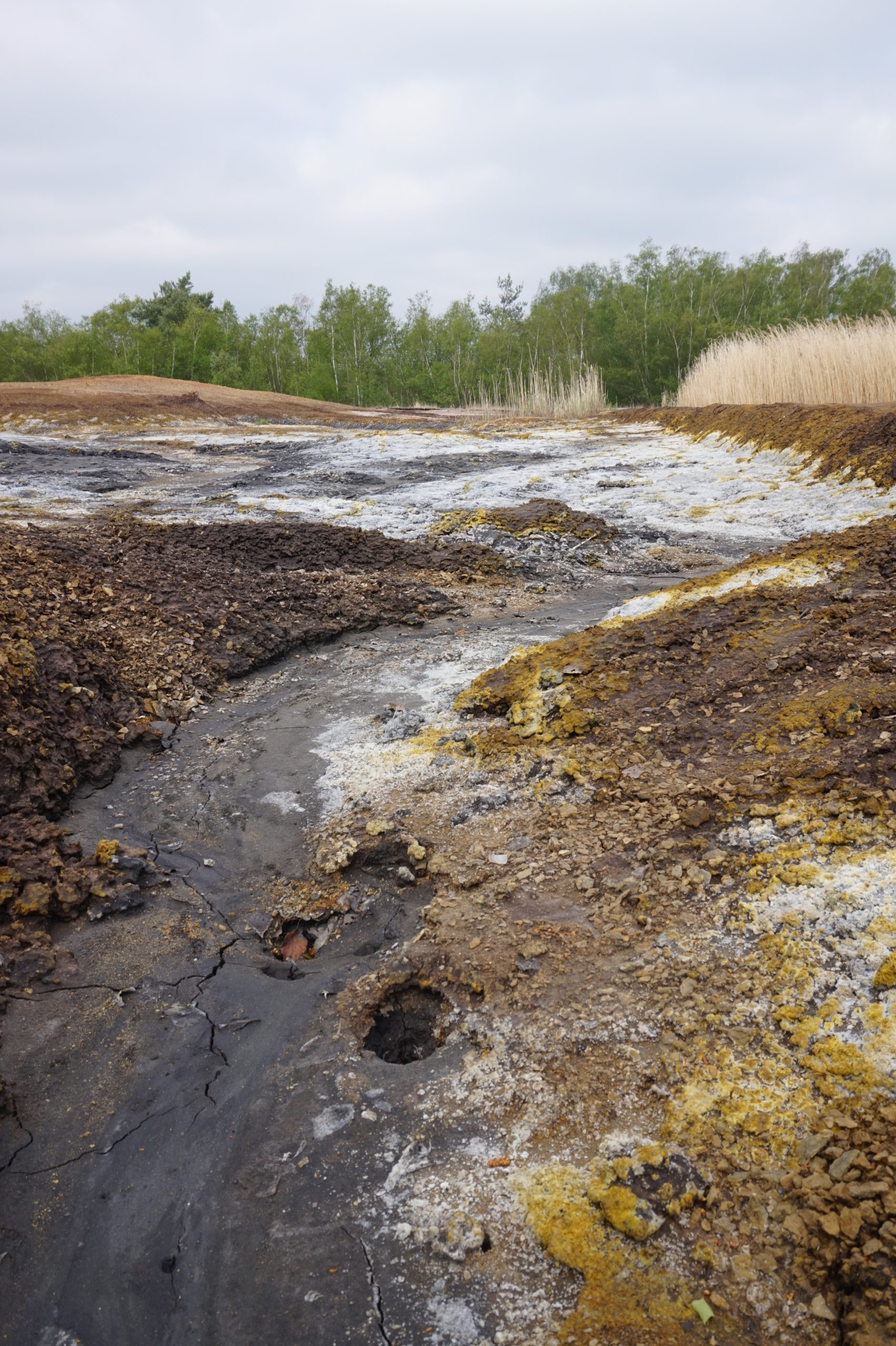Presently ongoing geodynamic processes within the intracontinental lithospheric mantle give rise to different natural phenomena in the NW Bohemia/Vogtland region (Czech Republic, Germany), amongst others: earthquake swarms, mineral springs and degassing zones of mantle-derived fluids as well as highly concentrated CO2 (mofettes). Their interaction mechanisms and relations are not yet fully understood, but fluid pathways within the crust are assumed, that allow efficient fluid transport between the main hypocentral swarm quake region and the degassing areas at the surface. Here, we focus on the location of the presumed fluid channels as well as on the investigation of their near-surface spatio-temporal variability, targeting a depth of a few hundreds of metres. We applied a 3-D matched field processing (MFP) approach in the frequency band of 10–20 Hz considering the fluid flow as seismic noise source. Within three campaigns in 2015/2016, we recorded continuous seismic noise data on the Hartoušov Mofette Field within the Cheb Basin (NW Bohemia, CZ), which is a key site to study fluid flow as it is characterized by strong and continuous surface degassing of CO2. We used temporary arrays varying in extent (70-600 m aperture) and in the amount of stations (25–95 units). Assuming a homogeneous velocity model and applying conventional MFP phase-matching over a 3-D grid search, we located two channel-like structures beneath the test site, which could be traced down to a common source area down to 2000 m depth. We thereby evaluated the influence of amplitude normalization of the measured noise signal on the MFP location considering water-filled or dry mofette channels. Additionally, a spatio-temporal analysis using time windows with a length of 10 min during 5 hr of noise record shows variability of fluid flow activity in space and time and hence, its migration beneath the test site on a short timescale.
 Swamp area with mofettes in NW Bohemia (Czech Republic). Mofettes are sinks which are characterized by active CO2 degassing and continuously fed by subsurface fluid channels.
Swamp area with mofettes in NW Bohemia (Czech Republic). Mofettes are sinks which are characterized by active CO2 degassing and continuously fed by subsurface fluid channels. More to it:
3-D fluid channel location from noise tremors using matched field processing